BU7002 Management Research Methods
Module Code Title : BU7002 Management Research Methods
Introduction
Human Resource Management (HRM) is the crucial aspect of business organizations where employee effectiveness differentiates the business approach and market competitiveness of the organization for gaining business success. In this research proposal the details of effective HRM measures for ensuring employee satisfaction along with appropriate research methodology will be discussed elaborately.
Research background
The employee effectiveness and satisfaction are coincided in the organizational business affairs and market competitiveness to achieve the business growth and prosperity through HRM practices. The employee management with scrutiny, selection, interview, recruiting, job alignments, training and development opportunity along with talent pool management is the responsibility of HRM to specifically align the employee with the job duty according to skill set. It usually helps in forming organizational culture for social and emotional well being of the employee to carry out the activity in a healthy environment with opportunity to outgrow the performance and opt for innovation. Moreover, employee satisfaction comes with the attainment of personal and professional goals where HRM activity is widely considered the approach to coordinate the new age employee satisfaction with hybrid work-life management and cost effectiveness with other opportunities (Malik et al., 2020). The employee motivation and job satisfaction are necessary to optimize the resources for growing productivity and performance management. The leadership supervision over the performance and activity gave a close appreciation of employee effort along with the essential feedback which cites the necessity of training and development of skill for job role and responsibility in everyday business process with job security and work life balance. On a specific note, the cultural competency, openness, zero tolerance over the discriminatory activity, respect for the individual dignity and differences are the HRM policy to manage the diverse employee strength as well as cooperate to attain the individual satisfaction for business objectives.
Research questions
The research questions are as follows:-
- How HRM effectiveness positively helps in employee satisfaction?
- What are the steps are necessary for HRM policies to ensure employee satisfaction?
- How employee satisfaction is creating differences in organizational effectiveness?
Research aim
The research aim is to define the key characteristics of HRM activity to effectively achieve employee satisfaction in the organizational environment to achieve the projected business goal through engaging in the competitive market operation.
Research objectives
| Specific objective | To implement the global mindset in organizational culture through HRM policy |
| Measurable | To generate feedback survey of employees regarding HRM effectiveness |
| Achievable | To achieve zero tolerance regarding the discriminatory process through employee grievance cell |
| Relevant | To satisfy the health and wellbeing of individual employee along with roadmap to attain the personal goals together with professional success |
| Time bound | To successfully create HRM effectiveness within 6 months |
Table 1: SMART objectives (Source: Self-Created)
The SMART objectives of the research proposal cite the implementation of global mindset in the organizational affair to collaborate the economic globalization and inclusion of regionally diverse people in the organization. The objectives will allow the research process to carry out a dependable HRM structure within the different organization to evaluate the degree of employee satisfaction and HRM effectiveness for organizational operation management. It will focus on the zero tolerance toward the discriminatory process in the ground of individual differences and satisfy the physical and mental well being of thee employee for growth in organizational productivity and market competitiveness.
Literature review
Research problem
The employee satisfaction is influenced by the happenings of business functionary to accommodate the organizational competitiveness and business effectiveness through better performance delivery with increased individual productivity. The specific approach of HRM is crucial for the employee management where it influences the organizational culture to cooperate within the organizational structure and balance the employee effort with reward as well as performance management (Meijerink, Beijer & Bos-Nehles, 2021). In addition to that, it ensures employee participation for business opportunities and grows through market standards and achieves sustenance for a long time. The remote work engagement and cooperation among the team with the scope for innovation and creativity remains the issues of research where HRM effectiveness and employee satisfaction will collaborate the organizational performance in the market with the quality control and competitiveness (refer to Appendix-1). The employee motivation and life cycle is important for organizational effectiveness where individual effort, preferences, innovation and interoperability are influencing the organizational operation. It coordinates the HRM to strategically achieve the effectiveness with potential for growth and prosperity of both the individual and organization (Suryani, Yoga & Sugianingrat, 2018).
Literature review
Inclusion of technology in HRM activity
The HRM is a wide area of application in organizational business affairs where the technological incorporation will allow the management to efficiently deal with the employee and align the individual according to the expertise in skill set. The emergence of the Covid-19 has indicated the necessity and viability of technology and associated tools to communicate interact with the employees to acknowledge the individual issues and business complexity to outline the employee efforts and organizational effectiveness. On a specific note, the smart phone, email chat services with options of video conferencing has made the work structure with HRM policies and regulation. The minimum hiring qualifications and experience will open the opportunity to recruit large scale employees for the business process which may actively support the business objectives through increased effort. The use of several technologies such as automation, robotics, big data and data analytics will help to coordinate the business progress with specific alignment of employees through analysis of the captured data. The internet of things (IoT), Artificial Intelligence (AI) and machine learning will help the work structure be more interactive and error free with interventions of digital interfaces to increase employee efficiency more energetically. The incorporation of technology in HRM practice has gained momentum with increased revenue generation for the business perspectives which may promote the employee satisfaction with opportunity to grow with better work life balance (Vrontis et al., 2021).
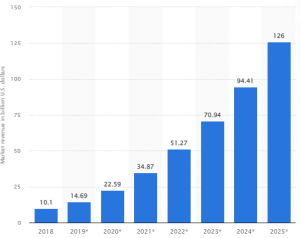 Figure 1: increased revenue share with incorporation of technology for employee satisfaction (Source: Vrontis et al., 2021)
Figure 1: increased revenue share with incorporation of technology for employee satisfaction (Source: Vrontis et al., 2021)
Impact of Covid-19 in the HRM
The Covid-19 pandemic has drastically changed the business affairs over the globe where the strict lockdown measurement taken by world leaders has forced them to opt for remote working structure to continue the business option and maintain the cash flow operation. It also witnessed the necessity of physical and social well being of individuals to support the daily activities of the organization where the Covid-19 had restricted the employee cooperation and assessment of individual well being for further business opportunity to grow along with the organizational growth and prosperity (Aurelia & Momin, 2020). The increased use of protective gear and frequent sanitization tool for minimizing the threats of Covid-19 more practically and equipped with machinery and technology to deal with employee issues proactively. The HRM practice is to diligently support the employee for organizational activity and influence the personal growth of the individual for employee satisfaction and long term retention for organizational efficiency. It has been observed that the Covid-19 has badly impacted the overall HRM strategy to cooperate and continue the business process with existing norms and policy (Refer to Appendix-2). Several organizations are effectively changing the HRM strategy and giving opportunities to flexible working models and remote working facilities to keep the employee safe and sound for the organizational purposes.
Conflict management and decision making through effective HRM
The HRM effectiveness greatly lies within the effectiveness in conflict management and decision making to address the employee issue more regularly to achieve growing trust and reliability over the HRM from teeth employees. The irregularity in conflict management may worsen the organizational culture of cooperation and bond among the team members which may negatively impact the employee satisfaction with low performance. On the contrary, the decision making process is also vital for the HRM effectiveness where it defines several outlines to manage the employee with shift management, payment option, increment and promotion opportunity based on personal effectiveness of the individual employee. The effective decision making and conflict management allow the HRM policy to address the individual issues along with interactively design the employee satisfaction goal to achieve and utilize for business prosperity with increased participation and growth in productivity. More than that, the proactive action taken by HRM for the complaint of the individual through the employee grievance cell is mandatory for satisfying the employee according to the job role and responsibility. The culturally diverse employee may experience the different kinds of cornering and bullying in the organizational sphere which may alter the degree of employee satisfaction and decrease productivity (O’Neill & Mclarnon, 2018).
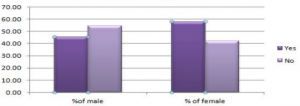 Figure 2: Magnitude of employee dissatisfaction (Source: O’Neill & Mclarnon, 2018)
Figure 2: Magnitude of employee dissatisfaction (Source: O’Neill & Mclarnon, 2018)
Employee motivation and empathy through HRM
Employee motivation and empathy are important factors of employee satisfaction where the employee performance is reinvigorated through the HRM effectively to address the employee goals and issues in personal and professional life. The employee satisfaction is directly influenced through the degree of motivation where effective HRM will coordinate the employee effort with appraisal, increment, bonus, promotion, leaves and special offerings to justify the employee contribution in business correspondence thriving for prosperity and sustainability. The motivation system also energizes the employee’s performance through a healthy competition in the organizational culture to dominate in business functionary for enhanced market competitiveness and higher degree of cooperation in the organizational environment. In addition to that, empathy towards the employee issues and emotional well being generates trust in leadership over the business process. The employees are enabled to express personal feelings and obstacles in the work function more closely through open communication with the management and leadership. The HRM functionality is responsible to take care of the employee’s overall well being where the empathy and motivation allows to effectively achieving cross functionality over the employee issues and business objectives. It also creates value for the employee towards assimilation of personal goals with the professional objectives for sustainability and high rate of retention through moral efficacy and felt obligation (He & Kim, 2021).
Leadership engagement and interoperability for HRM effectiveness
The HRM effectiveness is broadly dependent upon the leadership engagement and interoperability through the essential skill set of strong communication, cultural competence, high emotional intelligence, critical thinking, conflict management and decision making. The leadership’s frequent engagement allows the project visionary to be clearer to the subordinate and understand the complexities with close look and supervision. Other than that, the interoperability of leadership will allow the organization to smoothly manage the employees of several business processes to coordinate and optimize the resources more rigorously. It also makes the organizational culture friendlier for working harmoniously through conflict management and a sense of responsibility and respect towards the individual dignity and difference to increase the team activity in diverse teams for organizational business operation. The HRM policy towards zero tolerance for discriminatory approaches will be mitigated more authenticates for continue the business functionary with effective employee performance through increased satisfaction. Leadership engagement also contributed towards employee effectiveness through social and mental well being of individuals to coordinate the business operation through satisfied effort.
Leadership effort to recognize the employee potential through HRM
The recognition policy in the HRM is the significant factor of employee satisfaction where close supervision allows the leadership to actualize the employee effort for business growth and accompanying the individual with specified control and direction. The leadership supervision has helped to acknowledge the employee potential for the business opportunity and lack of efficiency for further training and development of skills. It collaborated the monitoring of employee performance with essential feedback to perfectly align the individual effort to the business function which leads to prosperity and economic growth of the organization through institutional leadership (Russell et al., 2018).
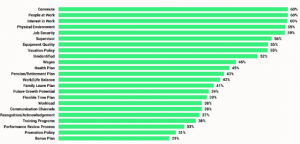 Figure 3: Feedback from the employees to enhance satisfaction (Source: Russell et al., 2018)
Figure 3: Feedback from the employees to enhance satisfaction (Source: Russell et al., 2018)
On a specific note, leadership recognition of employee potential enables the management to create a potential talent pool for further leadership which influences the employee satisfaction for the opportunity of clinching the potion of top leadership. The recognition of employee potential has been directed to manage the employee effectiveness more profoundly which minimizes the turnover ratio with increased performance of the employee to outgrow others in the competition of leadership probability.
Addressing the necessity of training and development of employees
Training and development of employees is the essential factor for the business alignment with market standard and enjoy the trust of the client for better sustainability and growth opportunity. The training and development of employees allows coordinating the job role and responsibility through sharpening existing skills, acquiring new skills and knowledge for better productivity and business outcome with propensity for future leadership and market competitiveness. The opportunity blesses the employee to improve the potential for the personal goal along with professional accuracy to maintain the everyday business function and highlight the organizational culture to prosper and develop. Apart from that, it will make the employee more cooperative across the business process and others will be eyeing to join the company for growth and prosperity with personal development. The training and development opens the scope for modernising of business function along with change management practice to invigorate the existing business operation through digital transformation and industry 4.0 for better market share and supremacy in business competition. Therefore, the employee satisfaction will grow with the process of skill development and realignment to job role and responsibility for further satisfaction upon professional zeal (Belias, Vasiliadis & Mantas, 2020).
Research methodology
Research philosophy
Rresearch philosophy is the most important part of the methodology where this research will use the positivism philosophy with hypothetico deductive approach to establish the research topic more competitively. Positivism research Philoophy incorporates evidence-based reality with mathematical interpretation to increase the credibility of the research subject to the reader with practical examples in reality and factual knowledge. The positivist research philosophy will engross the understanding of the topic through objective and scientific way through detailed observation and reasoning. It will allow the research process to enhance the reliability of the research topic through scientific facts and examples with the objective of employee satisfaction through HRM effectiveness (Bell & Waters, 2018).
Research approach
The other critical part of the research according to Saunders research onion is the research approach for systematic procedures of research process. This research will be done through the deductive approaches to align the findings systematically in the research process with a systematic plan and procedure to conduct the research effectively. It will establish the research objectives more confidently based on research problems through detailed methods of data collection, analysis and interpretation. It involves starting with a certain theory, development of hypotheses from the theory and then engaged with data collection and analysis to test the specific hypothesis for clarity of conclusion in the research subject.
Research strategy
The research onion depicts the research strategy which is significant to schedule the research conduct with a step by step action plan through guiding the research process through providing direction to carry out the research more appropriately. This research will consider the qualitative interview as the strategy to forecast the research topic more minutely through open ended questions and detailed observation (Denzen & Lincoln, 2005). This will allow the research process to continue the interview with specific questions to witness the personal experience and issues in the HRM effectiveness for employee satisfaction.
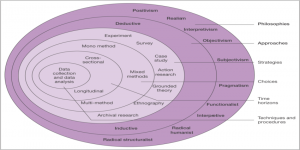 Figure 4: Research onion (Sources: Saunders et al., 2015)
Figure 4: Research onion (Sources: Saunders et al., 2015)
Sampling
The research sampling will be done through the cooperation of three professional employees working in reputed organizations in three different sectors for interviewing. The interviewing of individuals will accommodate the global and organizational practice of HRM with personal correspondence and exposure to risks and benefits.
Data collection
Primary data collection with interview will be considered appropriate for the research process where it will accommodate the interviewing of reputed and responsible professionals with open ended questions to acknowledge the research topic intertwined with personal experiences and opinions as well as views. Primary data collection will allow the research process to coordinate the data with fresh, specific, authenticate and up to date information for enhancing the credibility of the research (BIFAP, 2022). However, it helps the research process to enjoy the flexibility of interviews with high response rate and a better understanding to explain, explore and incorporate the personal opinions, behaviour, experience and phenomenon more collaboratively for the sack off research result.
Data analysis
Qualitative data analysis will remain appropriate for the research study to scientifically align the research objective in the research process to grow the reliability and authenticity of the research subject. Qualitative data analysis is the detailed process of cleansing, inspecting, transforming and modelling data to discover the important and useful information for decision making and forming conclusions of the research through the use of Microsoft Excel (Lester et al., 2020). It allows the incorporation of observation with objective information to establish the research subject in accordance with employee satisfaction and corresponding role of HRM effectiveness. The qualitative data analysis will allow the research process to accommodate the in depth analysis of the information in a subjective way through the word. It also allows the research process to explore ideas for further acknowledgment of organizational effectiveness for employee satisfaction. The qualitative data analysis gave the opportunity to emotionally connect with the research subject through objectivity with concrete numbers and fewer variables (Denscombe, 2017).
Ethics
This research process will be conducted through a fair and transparent way where no bird, animals or individuals will be harmed or threatened to accomplish the research result. It will not be involved in any kind of violence or unethical manner to conduct the research process for gaining confidence internationally with honey and appropriate way of conduction. The interviewees will cooperate voluntarily to take part in the research process for an authentic result of the research with due respect in the interviewing process and will not discriminate the personal views for research purposes. The information will be kept secure and will be used only for the research process where it will protect the information from any kind of theft, misuse and illegal activities.
Timeline
| Actions to be taken | Week 1 | Week 2 | week 3 | Week 4 | Week 5 |
| Planning and design | |||||
| Literature review | |||||
| sampling | |||||
| Data collection | |||||
| Data analysis | |||||
| Conclusion and Recommendations |
Table 1: Gantt chart (Source: Self-Created)
Conclusion
From the above discussion, it has been concluded that the research proposal gave detailed insights of HRM effectiveness for generating employee effectiveness to positively align the business process for market competitiveness with high rate of retention.
References
Aurelia, S., & Momin, M. M. (2020). Global reverberation and prediction for HRM amid and after COVID-19: A technological viewpoint. Materials Today: Proceedings.https://doi.org/10.1016/j.matpr.2020.11.544
Belias, D., Vasiliadis, L., & Mantas, C. (2020). The human resource training and development of employees working on luxurious hotels in Greece. Cultural and Tourism Innovation in the Digital Era, 639-648.https://doi.org/10.1007/978-3-030-36342-0_49
Bell, J., & Waters, S. (2018). Ebook: doing your research project: a guide for first-time researchers. Mcgraw-hill education (uk).
BIFAP, P., 2022. Data Collection and Structure. Textbook of Pharmacoepidemiology, p.181.
Denscombe, M. (2017). EBOOK: The good research guide: For small-scale social research projects. McGraw-Hill Education (UK).
Denzen, N. K., & Lincoln, Y. S. (2005). The Sage handbook of qualitative research.
He, J., & Kim, H. (2021). The Effect of Socially Responsible HRM on Organizational Citizenship Behavior for the Environment: A Proactive Motivation Model. Sustainability, 13(14), 7958.https://doi.org/10.3390/su13147958
Lester, J.N., Cho, Y. and Lochmiller, C.R., 2020. Learning to do qualitative data analysis: A starting point. Human Resource Development Review, 19(1), pp.94-106.
Malik, A., Budhwar, P., Patel, C., & Srikanth, N. R. (2020). May the bots be with you! Delivering HR cost-effectiveness and individualised employee experiences in an MNE. The International Journal of Human Resource Management, 1-31.https://doi.org/10.1080/09585192.2020.1859582
Meijerink, J. G., Beijer, S. E., & Bos-Nehles, A. C. (2021). A meta-analysis of mediating mechanisms between employee reports of human resource management and employee performance: different pathways for descriptive and evaluative reports?. The International Journal of Human Resource Management, 32(2), 394-442.https://doi.org/10.1080/09585192.2020.1810737
O’Neill, T. A., & Mclarnon, M. J. (2018). Optimizing team conflict dynamics for high performance teamwork. Human Resource Management Review, 28(4), 378-394.https://doi.org/10.1016/j.hrmr.2017.06.002
Russell, Z. A., Steffensen, D. S., Ellen III, B. P., Zhang, L., Bishoff, J. D., & Ferris, G. R. (2018). High performance work practice implementation and employee impressions of line manager leadership. Human Resource Management Review, 28(3), 258-270.https://doi.org/10.1016/j.hrmr.2018.02.003
Saunders, M. N., Lewis, P., Thornhill, A., & Bristow, A. (2015). Understanding research philosophy and approaches to theory development.
Suryani, N. K., Yoga, G. A. D. M., & Sugianingrat, I. A. P. W. (2018). Impact of Human Resources Management Practice on Employee Satisfaction and Customer Satisfaction (case study SMEs in Bali, Indonesia). International Journal Of Sustainability, Education, And Global Creative Economic (Ijsegce), 1(1), 59-62.https://doi.org/10.1234/ijsegce.v1i1.16
Vrontis, D., Christofi, M., Pereira, V., Tarba, S., Makrides, A., & Trichina, E. (2021). Artificial intelligence, robotics, advanced technologies and human resource management: a systematic review. The International Journal of Human Resource Management, 1-30.https://doi.org/10.1080/09585192.2020.1871398
Appendices
Appendix-1
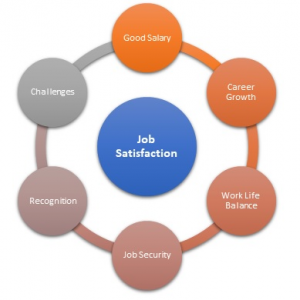
Appendix-2
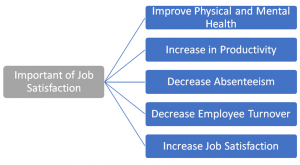
Know more about UniqueSubmission’s other writing services:

